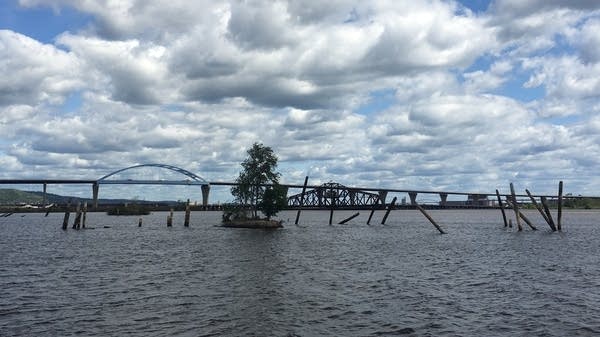In Duluth, restoring St. Louis River means dredging up the past

Old timbers left behind from Duluth sawmills in the late 1800s and early 1900s still jut out of the surface of the St. Louis River. The Minnesota DNR plans to remove the wood, which has destroyed habitat for aquatic plants and fish, and use it to create new wildlife habitat.
Dan Kraker | MPR News
Go Deeper.
Create an account or log in to save stories.
Like this?
Thanks for liking this story! We have added it to a list of your favorite stories.


